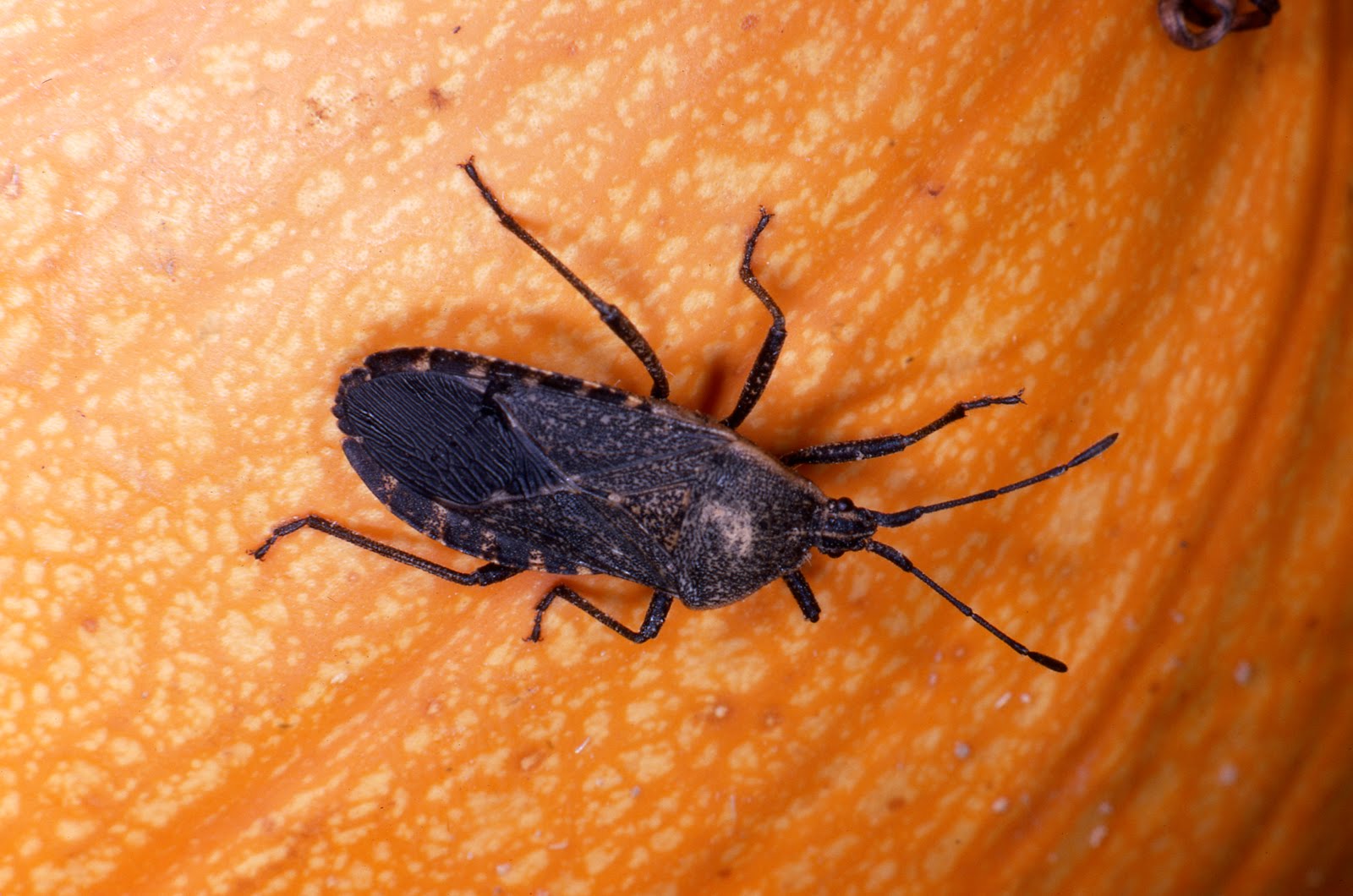

This name was chosen in reference to the five segments of their antennae. Stink bugs are classified in the family Pentatomidae, a name based on the Greek words “penta,” meaning five, and “tomos,” meaning sections. The section is referred to as a “bell-bottom.” Squash bugs do not have this feature. The squash bug and the western conifer seed bug are members of the family Coreidae, also known as the “leaf-footed bugs.” The two can be differentiated because the western conifer seed bug has a wide section on each of its hind legs. It can be difficult to tell these three pests apart. Squash bugs are typically not home invaders, although they can be a problem on cucurbit plants grown near residences. The bug is native to the United States, but when Native Americans began cultivating squash in the region, the bug began attacking the plant, and has been an issue ever since. Squash bugs can feed on many species of squashes, gourds, and melons. The squash bug Anasa tristis De Geer (Hemiptera: Coreidae) represents a third category of problematic insect. The brown marmorated stink bug has spread throughout the United States and Canada, infesting homes, gardens, and orchards. This insect arrived in Allentown, Pennsylvania in 1998, on a shipment from either China, Japan, or a similar location. The brown marmorated stink bug Halyomorpha halys Stål (Hemiptera: Pentatomidae) is one such invader. The western conifer seed bug’s colonization pattern is not typical for invasive insects, many of which are introduced from other countries.

It may be a nuisance, but it should not be considered invasive within the United States. Entomologists who view it as an invasive species argue that it deserves the label because it congregates in houses however, other scientists argue that the western conifer seed bug is a natural member of the North American insect community, that simply expanded its range eastward. Native to the western United States, the pest is debatably considered invasive on the eastern seaboard. They reached New York in 1990, and now occupy at least Columbia, Essex, and Greene Counties. The western conifer seed bug Leptoglossus occidentalis Heidemann (Hemiptera: Coreidae) has become an unwanted roommate in many northern New York homes. The purpose of this article is to describe the bugs, and discuss control strategies for each insect. Six-legged interlopers are occupying residences and gardens en masse this holiday season. According to northern New York homeowners, there are three bug species that refuse to follow the social distancing guidelines.


 0 kommentar(er)
0 kommentar(er)
